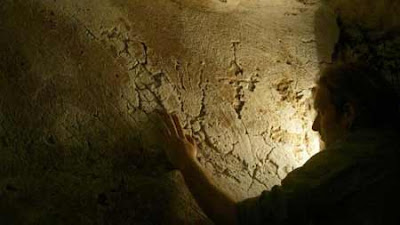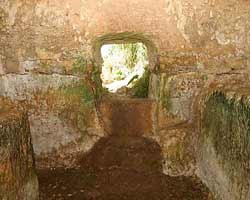
The cave of St. John the Baptist is a relatively new place of pilgrimage in the Holy Land – Israel. Many archaeologists have researched the place and its data for its authenticity. Archaeologist Shimon Gibson is the one who discovered the place and also the one supporting its authenticity.
Shimon Gibson discovered the place in 1999, through extensive archaeological research. To get here, pilgrims can take the bus from Jerusalem to Ein Karem and the holy cave is about four kilometers from Ein Karem in Tzuba.

St. John the Baptist – the last prophet of the Old Testament – had a divine mission hard to imagine: he, the servant of God, had to baptize his Master, Jesus Christ. But until the time of the Baptism of our Lord, St. John had lived an unspeakable ascetic struggle in the wilderness.
The Gospel does not tell us much about the life of Saint John. The Gospel of Luke, however, referring to St. John, says: “The child grew up and became strong in spirit, and he was in the desert until the day of his public appearance to Israel” (Luke 1:80).

It is believed that the Cave of St. John the Baptist is a place in the “wilderness” where the saint lived up to the time of his preaching and the baptism of our Lord. The rocky place that still preserves today the ancient cave, is in the land of Tzuba, which is the nearest settlement to the famous Ein Karem (the place where St. John the Baptist was born), slightly west of Jerusalem.
In a legend about this place, it is said that Elisabeth had fled with baby John, the night when crazy King Herod ordered the killing of all infants from his land, two years and younger (Matthew 2:16). A cave similar to this one was portrayed on a souvenir from the Byzantine era that was found in the Holy Land and brought later to Italy; it is a disc engraved with a picture and the words: “God’s blessings for the refuge of St. Elizabeth.”

In mid 4th-5th centuries, the Byzantine monks blessed the cave and used it as a holy place dedicated to St. John the Baptist. On the interior walls of the cave are found some of the oldest Christian mosaics (scenes from the life of the saint, the saint's body, a disembodied head, crosses, and other Christian symbols).
The man is portrayed standing, with one arm raised and a pastor rod in another hand, wearing very poor clothes. The hagiography drawings still preserved today on the rocky walls of the cave, indicate that a great Christian preacher lived there, which is believed to be St. John the Baptist.
In the 800’s, the cave was first used as a water storage tank. It was found as late as the first century, that the cave was used as a place of ritual bathing and cleaning. This is one of the largest of its kind in the entire Israel.
Visit msnbc.com for breaking news, world news, and news about the economy
Read also: Cave Linked to John the Baptist Cave of John the Baptist New Discoveries Point to 'Cave of John the Baptist' as Important Site in the Time of Isaiah The Cave of John the Baptist Virtual Tour